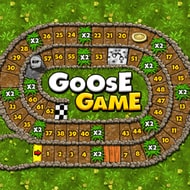
Goose Game is a luck-infused racing board game that places players in a winding sprint to the finish, where every move depends on chance and strategic adaptation. Using a single die to advance, players must navigate a path filled with beneficial bonuses and punishing traps that keep the pace unpredictable and highly replayable.
The Goose Game board features a continuous track composed of numbered squares. Each round, a player rolls a die and advances their piece accordingly. The seemingly simple action becomes complex due to the presence of several interactive tiles that alter gameplay rhythm and positioning in a major way.
Types of board tiles:
The central rule that defines tension in Goose Game is the requirement to land on the final square using an exact roll. If a player’s die roll would take them beyond the last square, they must bounce back by the difference. This keeps races close and introduces drama even when one player is in the lead.
Endgame complications:
Although Goose Game appears to be driven entirely by dice, players can subtly increase their chances of success by learning the board layout and planning responses to different roll outcomes. Luck plays a role, but choices based on board knowledge are equally vital.
With a new game flow each round and the unpredictability of combos, Goose Game stays engaging across multiple sessions. Players never know when a comeback will happen or when a dominant lead might collapse due to one bad tile.
Reasons the game stays fresh:
Goose Game remains a fun, fast-paced board experience built on unpredictability and pattern recognition. Even in a chance-heavy format, smart players find ways to maximize rolls, avoid danger, and chase victory with well-timed moves and risk management.